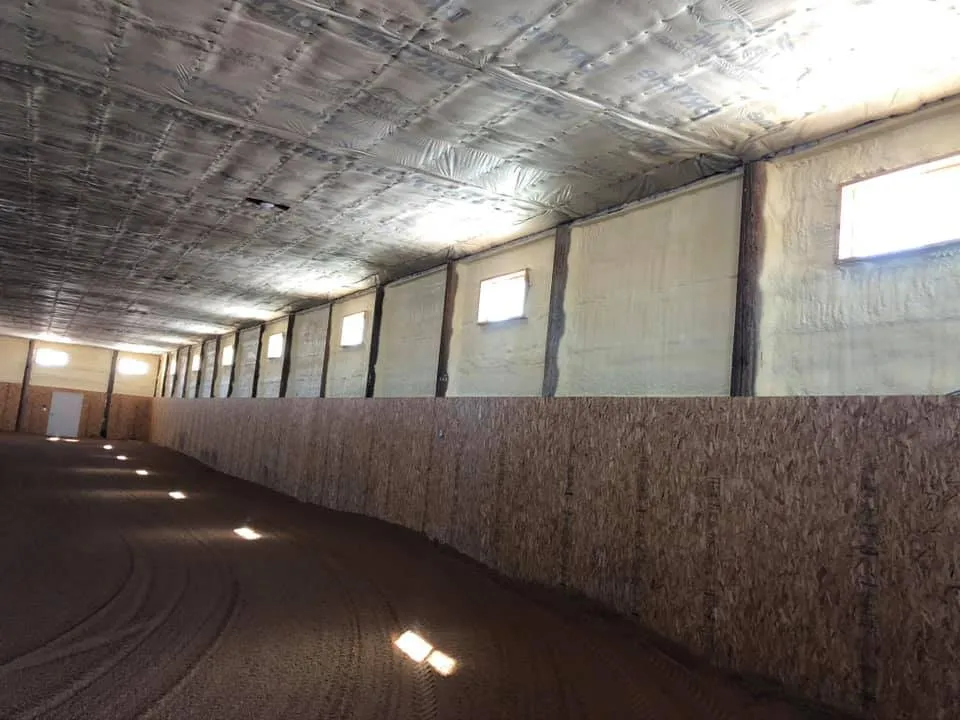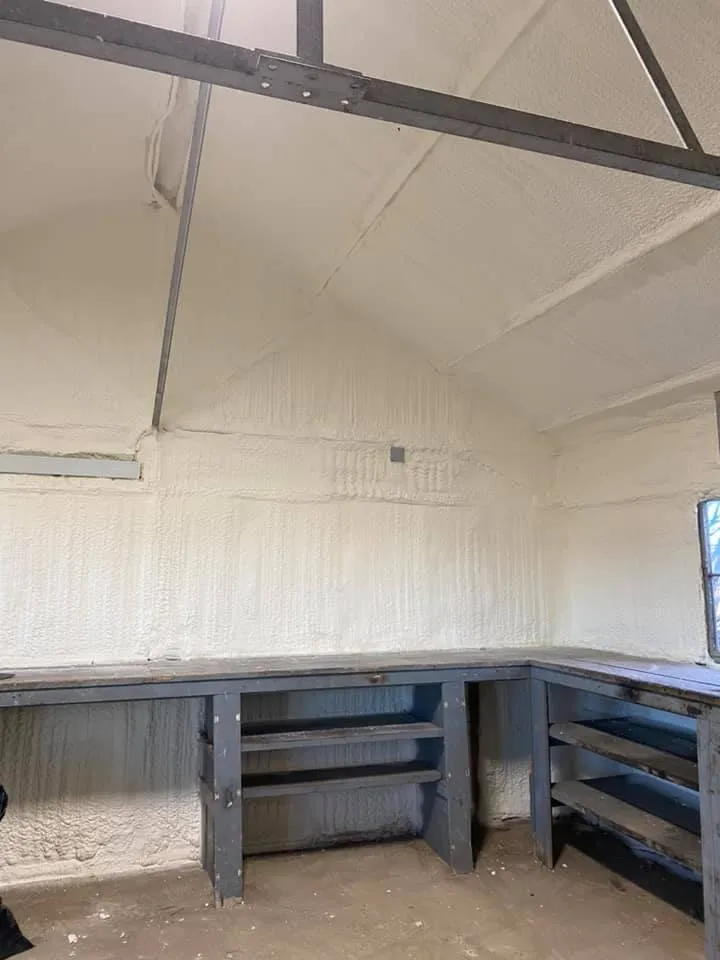

Spray foam insulation often provides the most consistent temperature control in barns compared to other insulation methods. Its ability to seal gaps, limit air infiltration, and deliver a high R-value per inch allows it to maintain stable internal temperatures year-round, even in climates with significant temperature swings. Closed cell spray foam generally offers higher thermal resistance and moisture control, while open cell spray foam provides effective air sealing at a lower density.
Practical field experience shows that barns insulated with spray foam retain warmth in winter and stay cooler in summer with less reliance on mechanical heating or cooling. For agricultural buildings, reducing heat stress on animals and preventing equipment from extreme cold damage directly supports operational efficiency.
| Insulation Type | R-Value per Inch (Approx.) | Air Sealing Capability | Moisture Resistance | Durability in Barn Environments | Installation Impact on Structure |
|---|---|---|---|---|---|
| Open Cell Spray Foam | 3.5 – 3.8 | High | Moderate | 15-20 years | Expands to fill cavities, minimal structural load |
| Closed Cell Spray Foam | 6.0 – 7.0 | Very High | High | 20+ years | Adds structural strength, rigid surface |
| Fiberglass Batt | 2.9 – 3.8 | Low | Low | 10-15 years | Requires vapor barrier, vulnerable to pests |
| Mineral Wool | 3.1 – 3.4 | Low | Moderate | 20+ years | Dense, fire-resistant, heavier load |
| Blown-in Cellulose | 3.2 – 3.8 | Moderate | Low | 10-15 years | Requires containment, settles over time |
| Specification | Open Cell Spray Foam | Closed Cell Spray Foam |
|---|---|---|
| R-Value per Inch | 3.5 – 3.8 | 6.0 – 7.0 |
| Vapor Permeance | 10+ perms (permeable) | <1 perm (impermeable) |
| Density | 0.5 lb/ft³ | 2 lb/ft³ |
| Typical Application Thickness for Barns | 5-7 inches | 3-4 inches |
| Temperature Operating Range | -40°F to 180°F | -40°F to 200°F |
Bonus Tip: In barns with high ammonia levels from animal waste, consider protective coatings over foam to extend lifespan.

Closed cell spray foam can significantly reduce condensation by preventing warm, moist air from contacting cold barn surfaces.
Once fully cured, spray foam is inert and safe. Proper curing time before animal re-entry is important.
Yes, both open and closed cell foam can adhere to metal surfaces when prepped correctly.
Yes, mechanical or passive ventilation is still required to manage humidity and air quality.
Spray foam offers reliable temperature control in barns through high thermal resistance, superior air sealing, and moisture control capabilities. Closed cell options suit high-moisture and extreme climates, while open cell works well for interior partitions and low-moisture zones. Proper application and ventilation design are critical for long-term performance.
For insulation solutions suited to agricultural needs, contact High Country Solutions at [email protected] or call (307) 248-9063. Get expert advice on matching insulation type to barn design and climate for the best temperature control results.
When properly applied, spray foam can last over two decades without significant performance loss.
Yes, small areas can be patched with new foam, but damaged sections should be inspected for underlying issues.
It does not serve as a food source for pests, but it does not eliminate the possibility of nesting without proper sealing.
Yes, with the right equipment and temperature-controlled material storage, application can occur in cold weather.
Closed cell foam has better resistance to cleaning agents and ammonia exposure than open cell foam.


